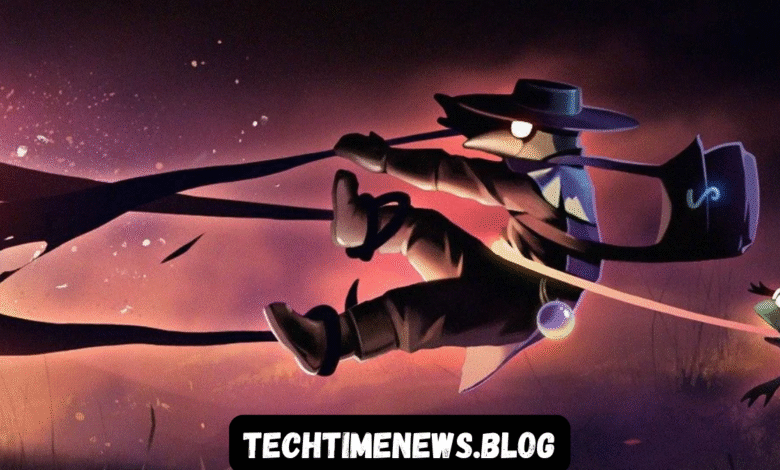The Serpentrogue Competitive Edge

Understanding the Concept of The Serpentrogue
The Serpentrogue Competitive Edge is not merely a title but an identity shaped by strategic thinking, adaptability, and unconventional skill mastery. In gaming culture, particularly in fantasy and action-adventure genres, the concept of the Serpentrogue refers to a player archetype that blends stealth, precision, and psychological warfare into a seamless performance. The term “competitive edge” in this context represents the unique advantage that sets this archetype apart from more straightforward approaches. Unlike characters or playstyles that rely solely on brute force or speed, the Serpentrogue thrives on an intricate balance of cunning and calculated moves. This balance is what makes the style so hard to predict and counter.
A Serpentrogue character typically draws inspiration from serpentine symbolism—patient, precise, and lethal when striking. In the competitive arena, whether in esports tournaments, multiplayer role-playing games, or PvP combat, this archetype demonstrates that victory often belongs to the player who can control the flow of the match mentally as well as mechanically. This philosophy goes beyond button-mashing skills and demands a mindset that sees the bigger picture while executing pinpoint maneuvers.
Origins of the Serpentrogue Strategy
The Serpentrogue competitive edge has roots in both traditional role-playing narratives and historical combat tactics. In folklore, rogues are agile, quick-thinking individuals who use their environment to their advantage, while serpents embody patience and the art of striking when the opportunity is perfect. When combined, these traits create a character profile that values positioning, disguise, and timing above all else.
In the gaming world, the Serpentrogue began to emerge as players moved away from direct, predictable combat strategies. Multiplayer online battle arenas The Serpentrogue Competitive Edge competitive RPGs, and sandbox survival games provided the perfect stage for such a playstyle. Players who adopted this approach realized that winning did not require overpowering opponents at every turn, but rather weakening them mentally, forcing mistakes, and capitalizing on vulnerabilities. Over time, this evolved into a refined meta-strategy recognized by competitive communities as highly effective in the right hands.
Core Elements of the Serpentrogue Playstyle
The Serpentrogue competitive edge rests on three main pillars: adaptability, subtlety, and calculated execution. Adaptability allows the player to respond to unforeseen challenges, whether it’s a shift in the opponent’s tactics or unexpected game environment changes. Subtlety ensures that actions are not easily read or predicted, keeping the opponent uncertain about the next move. Calculated execution means that every strike, ambush, or feint is part of a broader strategic plan.
What separates a true Serpentrogue from a casual rogue-style player is the emphasis on preparation. Preparation involves studying opponents, mastering terrain navigation, and creating contingency plans for multiple scenarios. In competitive matches, this translates into a steady psychological pressure that wears down the opposition over time, creating openings for decisive plays.
The Competitive Advantage in Tournament Play
In professional gaming or high-stakes community tournaments, having the Serpentrogue competitive edge can dramatically shift outcomes. Many competitive matches are decided not just by mechanical skill, but by who controls the pacing and rhythm of the encounter. A Serpentrogue thrives in disrupting the opponent’s comfort zone, forcing them into reactive positions. This advantage is especially potent in team-based games, where one player’s unpredictability can destabilize an entire opposing squad.
The element of surprise plays a huge role here. By deliberately avoiding patterns and mixing aggressive moves with retreat or misdirection, the Serpentrogue keeps opponents off-balance. This creates a psychological advantage, as opponents become hesitant, second-guessing their decisions. In a timed match, even small delays or hesitation can tip the scales toward victory.
Psychological Warfare as a Tool
One of the hallmarks of the Serpentrogue competitive edge is mastery of psychological warfare. This involves not only reading the opponent’s movements but also influencing their decision-making process. A Serpentrogue might feign weakness to lure an aggressive attack, only to counter it with a perfectly timed maneuver. They might also use environmental elements, such as shadows, cover, or verticality, to maintain control over the battlefield.
By manipulating the opponent’s perception, a Serpentrogue can dictate the tempo of the encounter. In extended series or matches, this mental pressure compounds, leading to errors. Once an opponent begins to doubt their strategy, they are far more likely to make risky moves, which the Serpentrogue can exploit with precision.
Training to Develop the Serpentrogue Edge
Acquiring this competitive edge requires more than basic game knowledge. It demands a deliberate training regimen focused on improving situational awareness, reaction times, and pattern recognition. Many skilled Serpentrogue players practice by analyzing replay footage of their own matches as well as their opponents’. This allows them to identify weaknesses, anticipate common strategies, and refine their approach.
Drills often include practicing escape routes, mastering quick decision-making under pressure, and learning to maintain composure in disadvantageous positions. A strong Serpentrogue player also develops a deep familiarity with the game’s mechanics, ensuring they can execute complex maneuvers smoothly in the heat of battle. Over time, this training cultivates instincts that feel natural but are actually the result of countless hours of preparation.
Balancing Risk and Reward
The Serpentrogue approach is not without its risks. The very nature of playing an unpredictable style means occasionally taking bold actions that could backfire. The competitive edge comes from knowing when to commit and when to hold back. Inexperienced players attempting the Serpentrogue style may overcommit to deception or elaborate traps, leaving themselves exposed.
Success in this style often hinges on a player’s ability to assess the evolving battlefield. If an opportunity presents itself, a skilled Serpentrogue can pivot instantly, converting a defensive stance into a sudden offense. However, knowing when to disengage is equally important. Walking away from a potential skirmish can sometimes yield greater long-term benefits than pushing for immediate damage.
How the Serpentrogue Fits into Modern Gaming Metas
Competitive gaming metas shift constantly, influenced by game updates, new mechanics, and evolving community strategies. The Serpentrogue style adapts well to these changes because it relies less on fixed builds or specific abilities and more on player creativity and adaptability. In games where stealth, mobility, and mind games are viable, this archetype remains a strong contender regardless of balance changes.
Moreover, the rise of hybrid playstyles in modern gaming has given the Serpentrogue even more versatility. Many players now incorporate elements of the style into otherwise aggressive or defensive builds, creating hybrid approaches that retain the unpredictable edge of the Serpentrogue while benefiting from other strengths. This flexibility keeps the archetype relevant and powerful even as metas evolve.
Case Studies of Serpentrogue Success
In various competitive scenes, from online RPG arenas to first-person shooter stealth tournaments, players who adopt Serpentrogue strategies have been able to punch above their weight. Some have upset far more mechanically skilled opponents simply by outmaneuvering them mentally. In team games, the presence of a Serpentrogue often forces the opposing team to allocate extra resources or attention to tracking their movements, indirectly benefiting the rest of the team.
These success stories highlight that raw mechanical ability is only one piece of the puzzle. The Serpentrogue’s value lies in their ability to control engagements, dictate pace, and force errors. This reinforces the idea that competitive edge is as much about strategy and psychology as it is about reflexes.
The Future of the Serpentrogue in Competitive Play
Looking ahead, the Serpentrogue competitive edge is poised to remain a staple of high-level play. As more games introduce mechanics that reward cunning and adaptability—such as destructible environments, dynamic maps, and advanced AI—the opportunities for Serpentrogue strategies will expand. Even in non-traditional formats like VR competitions or cross-genre tournaments, the core principles of the Serpentrogue will continue to prove effective.
The growing recognition of mental gameplay elements also suggests that coaching and training programs may increasingly incorporate Serpentrogue-style thinking. This could lead to a new generation of players who are not only mechanically strong but also masters of deception and strategy.
Challenges to Maintaining the Competitive Edge
While powerful, the Serpentrogue style faces challenges in staying ahead of opponents who learn to adapt. Experienced players and teams may develop counter-strategies, such as increased communication, tighter formations, or the use of detection tools to neutralize stealth advantages. This means that a Serpentrogue must continually evolve, introducing new variations and unpredictability into their game.
Another challenge lies in stamina and focus. Because the style demands constant attention to detail and strategic thinking, fatigue can lead to lapses in judgment The Serpentrogue Competitive Edge In long tournament runs or marathon matches, maintaining peak performance requires careful mental and physical preparation.
Conclusion
The Serpentrogue competitive edge is a fascinating blend of psychology, strategy, and skill execution. It represents the idea that in competitive gaming, success is not solely determined by who can act the fastest or hit the hardest, but by who can think the sharpest and adapt the quickest. This archetype thrives on uncertainty, manipulates the battlefield, and turns the mental game into a weapon as sharp as any blade.



